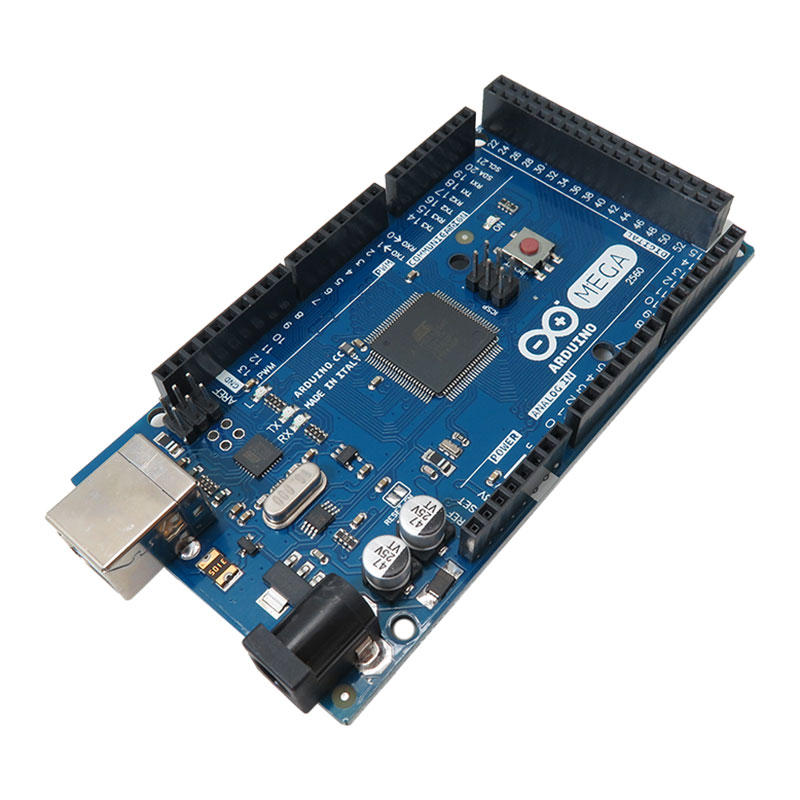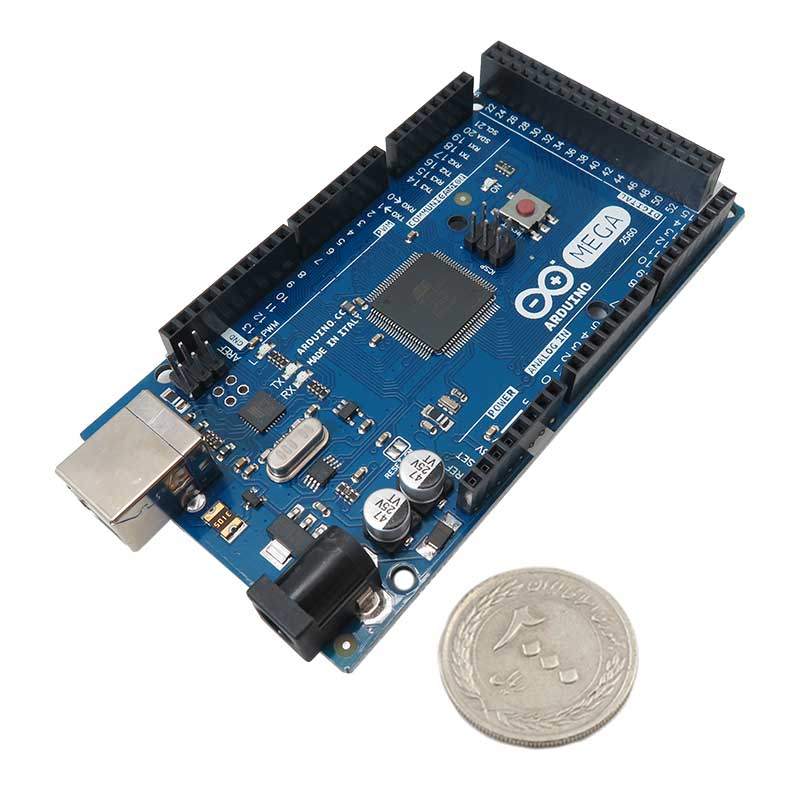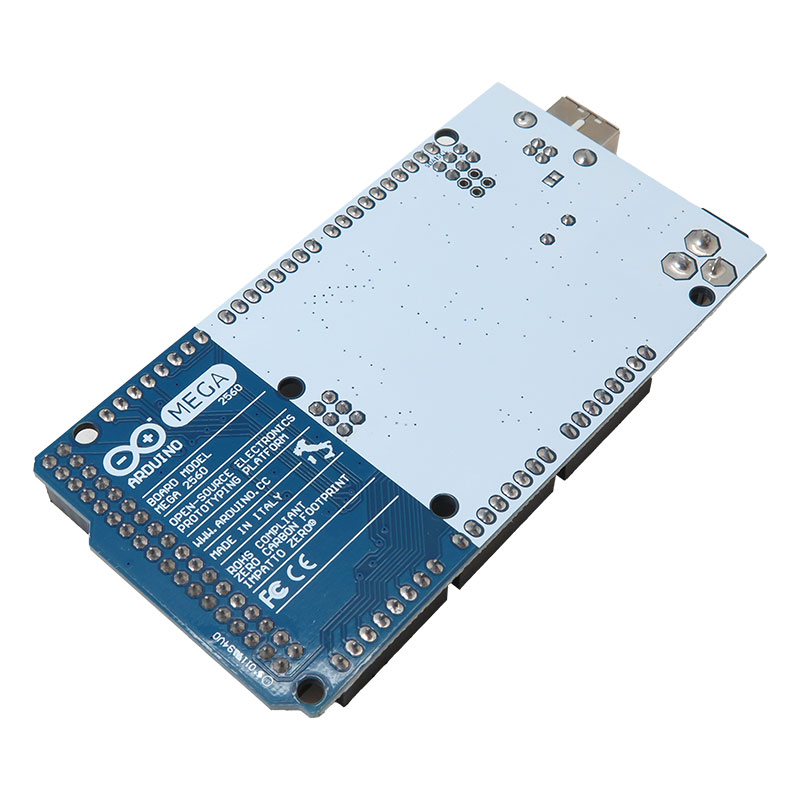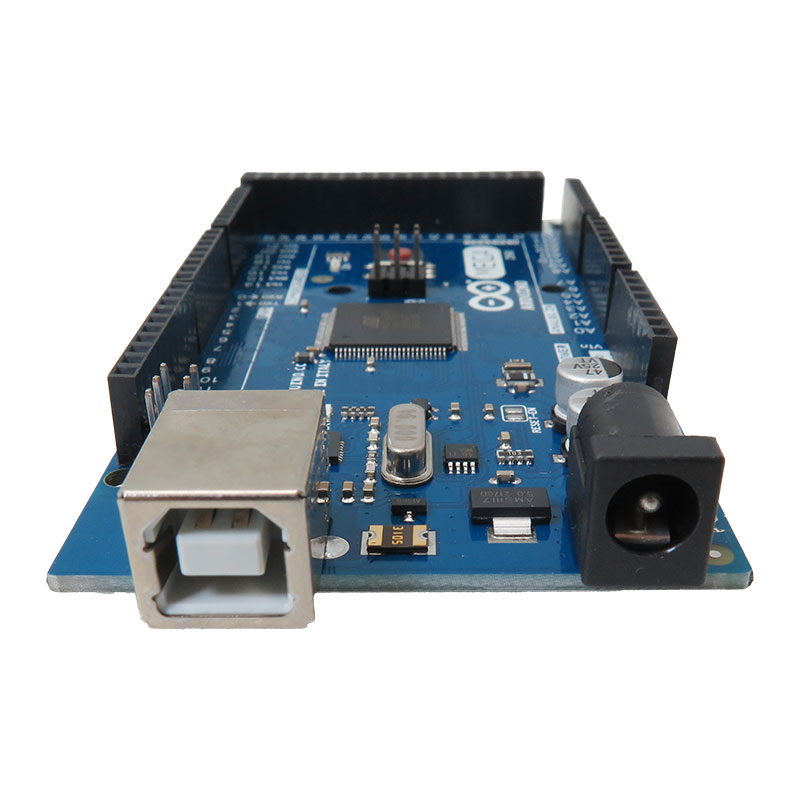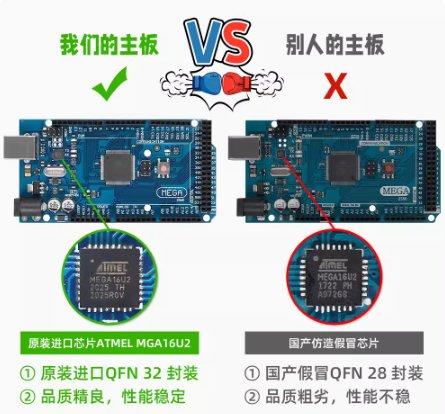برد Arduino Mega 2560 R3 با پردازنده ATmega2560
برد آردوینو Mega 2560 R3 یک برد میکروکنترلر بر پایه ATmega2560 می باشد. این برد مجموعاً 54 پین ورودی/خروجی دیجیتال (15تای آن می تواند به عنوان خروجی PWM استفاده گردد)، 16 ورودی آنالوگ، 4 پورت UART (پورت های سریال سخت افزاری)، یک نوسان ساز کریستال MHz 16، یک پورت USB، یک پاورجک، یکICSP Header و یک دکمه ریست نیز در این بورد تعبیه شده است.
برد Arduino Mega 2560 R3 شامل کلیه امکانات مورد نیاز جهت بکارگیری میکروکنترلر موجود برروی برد می باشد. برای شروع، تنها با یک کـابل USB، به سادگی می توانید برد را به کامپیوتـرتان وصل کنید همچنین با یـک آداپـتور AC to DC و یا باتری راه اندازی نمایید.
قابلیت های موجود در برد آردوینو MEGA R3 2560، باعث شده تا در پروژه های مختلف و مدارات پیچیده و هم چنین پرینترهای سه بعدی از آن استفاده گردد. پرینترهای سه بعدی ریپ رپ(Reprap) و مدل توسعه یافته آن، پروسا(Prusa i3) به همراه کنترلر Ramps از این برد کنترلی بهره میبرند.
کاربرد برد آردوینو مدل Mega 2560 R3:
- پروژه های الکترونیک
- آموزشی
- صنعت
مشخصات برد آردوینو مدل Mega 2560 R3:
- میکروکنترلر: ATmega 2560
- ولتاژ عملیاتی:5V
- ولتاژ ورودی (پیشنهادی): 7-9 ولت
- پین های دیجیتال ورودی/خروجی: 54 (15تای آن به عنوان خروجی PWM استفاده می شود.)
- پین های آنالوگ ورودی: 16
- جریان DC هر پین ورودی/خروجی: 40 میلی آمپر
- جریان DC پین 3.3 ولتی: 50 میلی آمپر
- حافظه فلش: 256 کیلوبایت (8 کیلوبایت از آن توسط BootLoader استفاده می شود.)
- SRAM: 8KB
- EEPROM : 4KB
- سرعت کلاک: 16MHz
مستندات:
مشخصات برد آردوینو مگا 2560
Description:
The Arduino MEGA 2560 is a microcontroller board based on the ATmega2560.
It has 54 digital input/output pins (of which 14 can be used as PWM outputs), 16 analog inputs, 4 UARTs (hardware serial ports), a 16 MHz crystal oscillator, a USB connection, a power jack, an ICSP header, and a reset button. It contains everything needed to support the microcontroller; simply connect it to a computer with a USB cable or power it with an AC to DC adapter or battery to get started. The Mega is compatible with most shields designed for the Arduino Duemilanove or Diecimila.
The Arduino Mega can be powered via the USB connection or with an external power supply. The power source is selected automatically.
External (non-USB) power can come either from an AC-to-DC adapter (wall-wart) or battery. The adapter can be connected by plugging a 2.1mm center-positive plug into the board's power jack. Leads from a battery can be inserted in the GND and Vin pin headers of the Power connector.
The board can operate on an external supply of 6 to 20 volts. If supplied with less than 7V, however, the 5V pin may supply less than five volts and the board may be unstable.
If using more than 12V, the voltage regulator may overheat and damage the board. The recommended range is 7 to 12 volts.
The ATmega2560 has 256 KB of flash memory for storing code (of which 8 KB is used for the bootloader), 8 KB of SRAM and 4 KB of EEPROM (which can be read and written with the EEPROM library).
The Arduino Mega2560 has a resettable polyfuse that protects your computer's USB ports from shorts and overcurrent. Although most computers provide their own internal protection, the fuse provides an extra layer of protection. If more than 500 mA is applied to the USB port, the fuse will automatically break the connection until the short or overload is removed.
Application:
Projects
industrials
education
Features:
Microcontroller: ATmega2560
Operating Voltage: 5V
Input Voltage (recommended): 7-12V
Input Voltage (limit): 6-20V
Digital I/O Pins: 54 (of which 15 provide PWM output)
Analog Input Pins: 16
DC Current per I/O Pin: 20 mA
DC Current for 3.3V Pin: 50 mA
Flash Memory: 256 KB (8 KB used by bootloader)
SRAM: 8 KB
EEPROM: 4 KB
Clock Speed: 16 MHz
